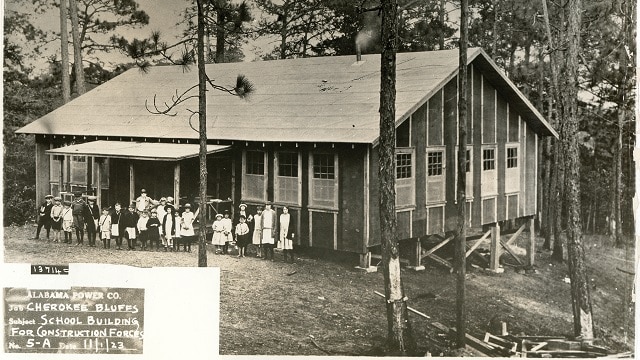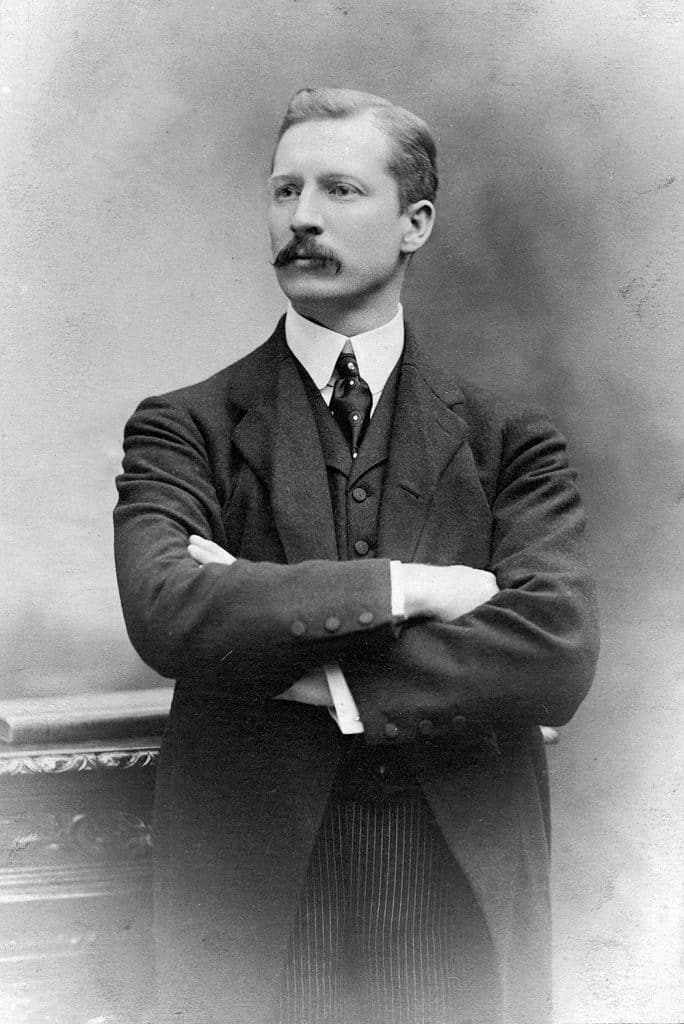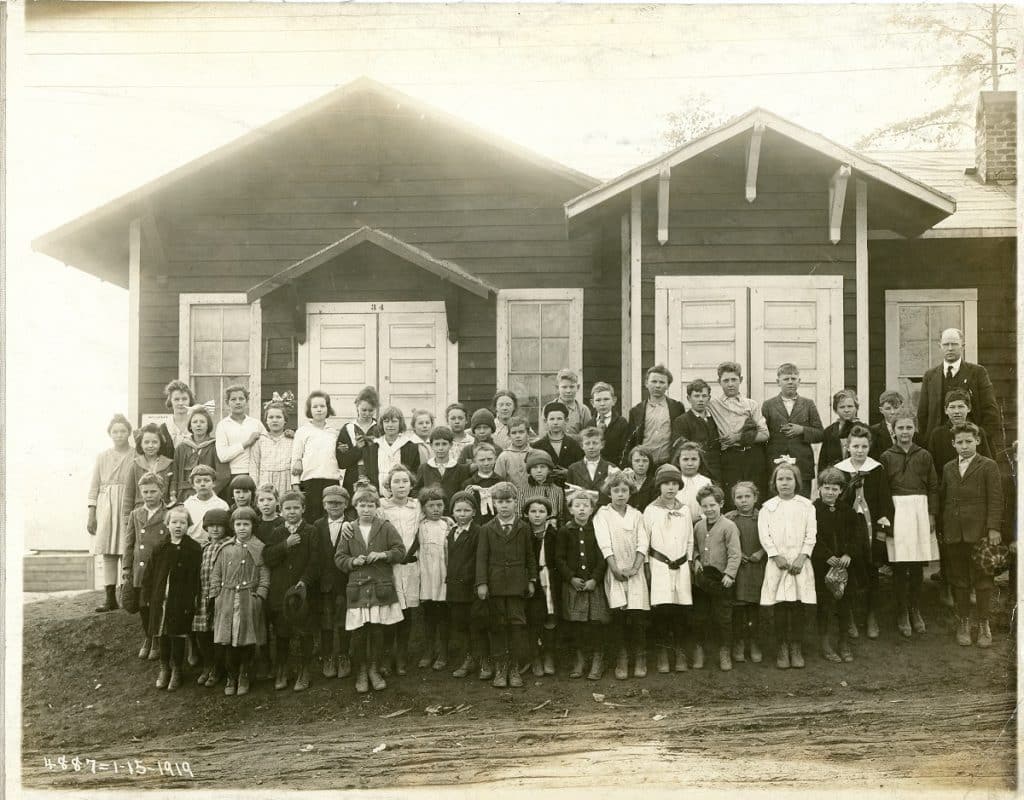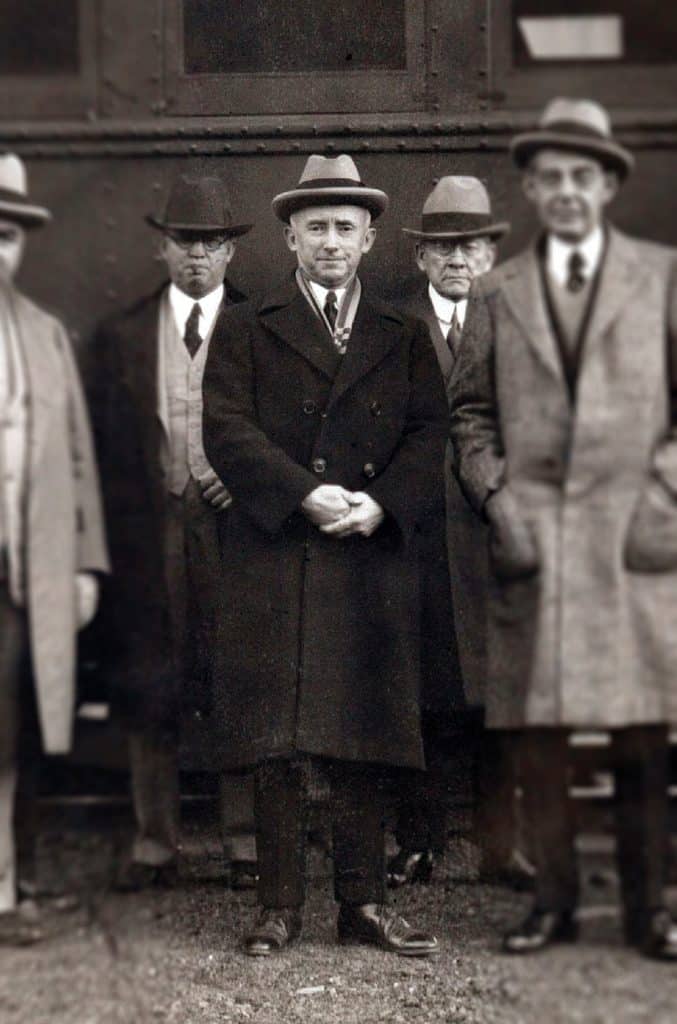During state’s bicentennial, Alabama Power builds on legacy of boosting Alabama

Cherokee Bluffs School for construction workers in 1923. (Alabama Power Archives)
Beginning in July 1819, 44 delegates from the Alabama Territory gathered in Huntsville to draft a constitution for Alabama’s statehood. Less than two months later, on Aug. 2, 1819, the delegates signed and sent it to Congress.
President James Monroe signed the Alabama Constitution on Dec. 14, 1819, admitting the 22nd state into the union.
 The bicentennial anniversary of that milestone is at hand. To support the commemoration, the state formed a 12-member commission in 2013. The members have established over 225 committees throughout Alabama to plan and coordinate events focused on education and community involvement.
The bicentennial anniversary of that milestone is at hand. To support the commemoration, the state formed a 12-member commission in 2013. The members have established over 225 committees throughout Alabama to plan and coordinate events focused on education and community involvement.
To further a legacy of educational support, Alabama Power and the Alabama Power Foundation are the lead “centennial sponsors.”
“It’s been an honor to be part of the team making Alabama’s bicentennial celebration a success,” said Alabama Power CEO Mark Crosswhite. “Throughout our company’s own history, our growth has been closely tied to that of our state and we look forward to working together for an even brighter future.”
History
Since the state’s inception, education has been at the forefront of policy and planning, with an entire section of the 1819 constitution dedicated to education, stating that “schools and the means of education shall forever be encouraged in this State.”
While education was still decentralized at the time, Alabama’s founders knew that for the state to progress, educational advancement was essential. By the end of the 19th century, there were over 1,300 schools in Alabama, though standards of instruction varied by students’ race and wealth.
Renowned historian Leah Rawls Atkins wrote in “Developed for the Service of Alabama” that “the Alabama in which the Alabama Power Company was founded … significantly shaped the company’s first one hundred years just as the company, in turn, shaped the state. The history of one reflects the history of the other, and their futures are still intertwined.”
The state’s focus on education is one that has been shared by the company for more than a century.
With a dream of developing Alabama’s waterways for navigation and hydroelectric power to advance the state, third-generation riverboat Capt. W.P. Lay, with fellow Gadsden natives O.R. Hood and Earl Lay, incorporated Alabama Power on Dec. 4, 1906.

James Mitchell (Alabama Power Archives)
While their $5,000 capital investment was enough to establish the company, greater connections and financial contribution were necessary to bring the dream to fruition.
On May 1, 1912, Lay turned over control of the company to James Mitchell. Alabama Power’s new president said, “Not only would ordinary creature comforts follow in the wake of electricity, but there would be better educational facilities, better roads and better homes. To make money is all right. To build any industry is fine. To build an industry that saves mankind from toil that it can well be spared, that reduces the labor and drudgery of women and so provides leisure for education and culture, truly is a much finer thing.”
At the time Mitchell made that statement, there was little demand for electricity within Alabama, as about 70% of the state was agrarian. However, Mitchell saw a bigger future for Alabama, where integrated electric service could power new industry, opening the future for higher standards of living, and cultural and social advancements for its people.
Many of the earliest projects by Alabama Power were in rural, isolated areas that required villages for construction crews, with housing, recreation facilities and, often, their own schools. Whenever possible, the company would help fund existing area schools. However, when county or state schools were inaccessible, the company would build its own grade schools and provide transportation to consolidated high schools.
“The company’s system for educating the children of its employees attracted the attention of many noted educators and was appreciated by the general public as a vital contributor to the literacy of the state,” Alabama Power records reveal.
Memories from company village students include:
“I remember the village school being used for so many occasions besides teaching 1-6 grades. Vaccinations for typhoid fever and smallpox were given by the public health nurses at the school. Votes were cast at the school during elections. Ministers came in from Clanton to preach on Sundays. Our mother taught Sunday school there, as did many other mothers.” – Eleanor “Downie” O’Neal Nemec, Lay Dam.
“Our school was a very important part of our lives. … All of the people at Lay Dam, including us at school, did something for the World War II effort. Many of us had relatives fighting. … The men working at Lay Dam were considered to be essential to help keep the electric power going for our country. There were soldiers who lived in the ‘bunkhouse’ and guarded the dam.” – Mary Lou Greene Easterling, Lay Dam.
“The original school built in 1922 consisted of a two-room dwelling, which was used as a church and classrooms, along with a four-room dwelling, which was a combination of classrooms and Sunday School rooms. … We traveled by school bus to Parrish High School for grades 10-12. The students from Goodsprings came to the school in the seventh grade.” – Jone Burnett Davis, Gorgas Steam Plant.

Gorgas School at the company village on January 15, 1919. (Alabama Power Archives)
Early on, Alabama Power’s third president, Tom Martin, said, “The South’s greatest resource is its people.”

Tom Martin (Alabama Power Archives)
In addition to the provision for education of youths in the villages, the company expanded its commitment to education by providing support for individual collegiate scholarships and awards, as well as funding for electrical engineering programs at the University of Alabama and Alabama Polytechnic Institute (now Auburn University), and a funding collaborative with Auburn for the study of rural electrification.
While president of Alabama Polytechnic, Spright Dowell said, “The work your company is doing is an outstanding constructive force for the upbuilding of the State and Nation that is not equaled by a similar organization anywhere.”
Many graduates of Alabama’s colleges and universities went on to fill positions throughout Alabama Power, including Maria Whitson, Auburn’s first female electrical engineering graduate, and former APC President Joe Farley, who completed graduate work in business administration at the University of Alabama. Continuing education was encouraged for employees, from correspondence programs to an evening school at Gorgas Steam Plant.
In 1950, Martin asked several prominent education, science and business professionals to “forecast goals and hopes for the next one-half century of world progress.” A.R. Meadows, state superintendent of education at the time, believed “education in America and in Alabama will be greatly improved and will do much toward improving living conditions of all mankind.”
With the founding of the Alabama Power Foundation in 1989, the company was able to help fulfill that hope by expanding the outreach and impact of educational support and service to the state. Since inception, the foundation has given more than $231 million in noncustomer funding to the arts, education, environmental stewardship, civic and community development, and health and human services.
“The Alabama Power Foundation is a source of good, designed and dedicated to work for the advancement of the people of our state,” said Myla Calhoun, foundation president.
In 2018, the foundation supported more than $6 million in educational initiatives, including Power to Play, classroom grants and Students to Stewards.
Bicentennial
As the state’s bicentennial activities come to fruition, Alabama Power has been a primary benefactor of the educational initiatives, including teacher training institutes, support for schools involved in community engagement projects, and the development of the PastPort that has encouraged thousands of residents and nonresidents alike to visit historic destinations in all 67 counties.
The education initiatives were designed to have a long-term impact, by supporting and encouraging history teachers through networking and development of instructional resources and teaching strategies that will enable them to connect with and inspire students for years to come.
A teacher from Eufaula who took part in the institute said, “I knew (the workshop) would be a great tool for instruction. As an English teacher and cult historian, it has really generated a new sense of excitement to share Alabama’s narrative in my classroom, and to ensure that the voices of the past are not forgotten but brought to life.”
About 200 schools performed community projects throughout the past year, with 21 recognized as Alabama Bicentennial Schools of Excellence and awarded grants to continue and expand projects.
While many of the education programs focused on third through fifth grades, about 40 high school students were selected as part of an Alabama Bicentennial Student Advisory Committee. Students had the opportunity to manage the AL200 Twitter account, bringing student voices and perspectives to the celebration, while also highlighting the impact of the bicentennial on their school and community.
“Support for education has been a mainstay of Alabama Power for over a century,” Calhoun said. “Because we believe that our most valuable resource is our people, and that knowledge, imaginations and skills build upon each other to deliver a healthier, more vibrant and more prosperous state.
“Throughout the bicentennial, we have been proud to support our teachers and communities, and through the foundation, the Alabama Power Service Organization and the Energizers, we will maintain that commitment for generations to come,” Calhoun said.
This story originally appeared in Powergrams.








